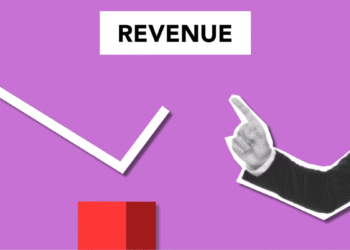Payhip gives you a decent head start when it comes to affiliate marketing.
You can turn on their built-in affiliate system with a couple of clicks. But if you want to really grow, like, automate outreach, track performance better, and recruit top-tier affiliates, you need to bring in some external tools.
In 2025, it’s not just about offering an affiliate link and praying for sales. You’ve gotta treat your affiliate setup like a real part of your business. Whether you’re selling ebooks, digital templates, coaching programs, or online courses, these tools will help you scale smarter and sell more.
1. ConvertKit – For Segmenting and Emailing Your Affiliates
If you’re serious about recruiting and managing affiliates, ConvertKit is your best friend. While Payhip collects emails automatically, ConvertKit helps you organize them by tags (like “Affiliate – Joined March 2025”) and build sequences to stay in touch.
Here’s how you can use it:
-
Set up an affiliate welcome email sequence
-
Send regular updates, bonus offers, or promo ideas
-
Segment based on performance or product category
One Payhip seller used ConvertKit to send a weekly “Top Affiliate Tip” and saw a 27% increase in link shares. Just saying—it works when you treat your affiliates like part of the team.
2. Canva – For Affiliate Promo Kits and Swipe Files
Your affiliates need good visuals to promote your stuff. Canva is a no-brainer in 2025, especially with its AI-generated mockups and templates.
Create a mini promo kit that includes:
-
Product mockups (ebooks, planners, etc.)
-
Instagram story templates
-
Pinterest pins or Facebook ad visuals
-
Branded banners for blog posts
You can even use Canva’s template links so affiliates can customize graphics with their own branding. Make it easy for them to make you look good.
3. TidyCal or Calendly – For Booking Affiliate Calls
When you’re recruiting top partners, especially influencers or content creators with a big following—you want to build relationships, not just send links.
Tools like TidyCal or Calendly help you schedule quick Zoom calls for onboarding or collabs. A 15-minute chat can turn into a long-term partnership that drives real sales.
One seller set up a “Book a call to become a premium affiliate” link, offered a 50% commission to high-performers, and locked in four content creators who now drive half their revenue.
4. Airtable – For Managing Affiliate Content and Outreach
Spreadsheets are fine… until they’re not. Airtable gives you a visual way to track affiliates, outreach status, commissions, and even performance over time.
Best ways to use it:
-
Track who’s signed up, shared content, and made sales
-
Store links to social posts, UTM tracking codes, or blog mentions
-
Plan bonus offers or launch promotions with affiliate partners
Plus, with Airtable’s automation features, you can set reminders to follow up with inactive affiliates or reward top performers at the end of each month.
5. Bitly or Switchy – For Smart Link Tracking
Even though Payhip tracks affiliate sales, you don’t always know which traffic source is working unless you use link shorteners and UTM codes.
Bitly is solid, but if you want branded links and deeper analytics, Switchy is a better pick in 2025. You can:
-
Create shortened, branded affiliate links
-
Track click-throughs by traffic source (like IG bio vs. email)
-
Retarget visitors with Facebook or TikTok pixels
One creator added Switchy to their toolkit and realized that 70% of affiliate traffic was coming from a random blog post, not their Instagram—total game changer.
6. Notion – For Hosting an Affiliate Resource Hub
Payhip doesn’t give you a central affiliate portal, so use Notion to create your own.
Set up a clean, private page with:
-
Your affiliate rules and commission structure
-
A library of product images and swipe copy
-
Launch calendars or content suggestions
-
FAQs and contact info
Share the link in your affiliate welcome email and keep it updated. It makes you look pro and saves you from answering the same DMs over and over.
7. Rewardful (For Growth Beyond Payhip)
This one’s for folks thinking long-term. If you’re planning to eventually move off Payhip or run a SaaS or membership model, Rewardful integrates with platforms like Stripe or Webflow.
It’s overkill for beginners, but worth knowing if you want more advanced affiliate analytics, tiered commissions, or custom dashboards.
Bonus Tip: Keep It Simple, But Don’t Wing It
You don’t need all seven tools to get started but you do need some system beyond the default. Pick two or three based on what stage you’re in. Start with Canva + ConvertKit if you’re building your base. Add Bitly or Airtable once affiliates start rolling in.
And whatever you do? Don’t just send people a Payhip link and hope for the best. Treat your affiliate system like a living, growing part of your marketing engine. In 2025, it’s one of the few growth channels that still works without paid ads—and it’s built on relationships.
Start small. Stay consistent. Give your people what they need to help you sell. That’s the whole game.







